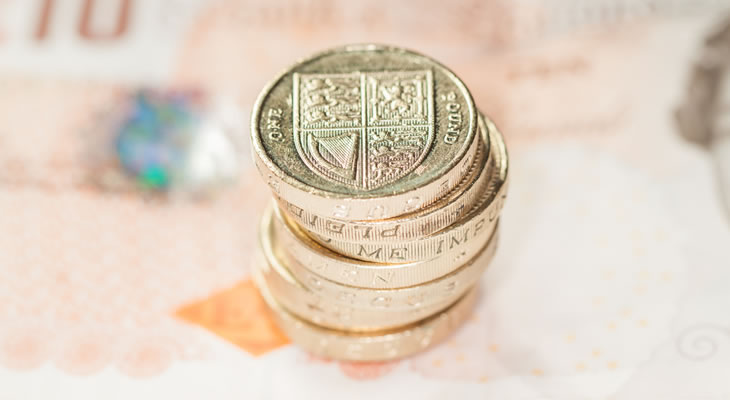GBP: Pound Falls after UK Construction Slows in June
Sterling recorded some losses against most of the majors yesterday after Markit revealed a two-point drop in the UK’s manufacturing PMI. The report demonstrated that factory output for June had decelerated from an index of 56.3 to a three-month low of 54.6, cooling in response to a lack of demand abroad and at home.
Today’s Markit/CIPS release of the UK Construction PMI also hit below expectations, printing at 54.8 – down from a previous figure of 56 and below the expected reading of 55, an event that caused Sterling to pare even more of its gains.
Duncan Brock, Director of Customer Relationships at the Chartered Institute of Procurement and Supply elaborated:
‘The construction sector’s confidence took a knock this month as optimism fell to its lowest reading in 2017 and clients became more restrained in placing new orders. Respondents cited continuing uncertainty in the run up to the election and Brexit negotiations for the hesitancy. But, the housing sector continued to have the most get-up-and-go with the second fastest rise since December 2015, leaving the other sectors lagging behind’.
The main contributors to the lost momentum were weaker growth in new orders and employment, the lowest business optimism in 2017 and signs of severe risk aversion– a trend that reflects the continued sensitivity of industries to the current economic and political uncertainty.
EUR: Eurozone Producer Prices Fall, GBP/EUR Trades within Narrow Band
Despite the Pound falling against most of the majors today, the Pound to Euro exchange rate has continued yesterday’s trend by trading within a relatively narrow band, primarily as a result of the Euro having some negative data of its own.
This morning the Eurozone’s producer price index (PPI) figures were released, revealing that prices had edged down -0.4% in May, lower than expectations of -0.2% and indeed far less stable than prices for the previous month. Investors keep an eye on PPI because it is a good indicator for future consumer price index (CPI) numbers and thus inflation levels, so a decrease in prices was enough to cause the Euro to weaken.
USD: GBP/USD Slides From 5-Week High after Positive US Manufacturing PMI
Yesterday the Pound to US Dollar exchange rate dropped by over half a cent as the UK’s downbeat reports were outperformed by a very positive US ISM manufacturing report. The US ISM manufacturing index was expected to come in at 55.3, instead it scored a three-year high of 57.8 in June as increases in production, employment and new orders drove the robust score.
This morning the pairing has continued to lose its gains, as the Pound suffered losses following the release of negative construction data.
There’s no big data for the US today, but investors will be waiting with baited breath for Wednesday’s Federal Reserve meeting minutes. Should investors identify a hawkish sentiment, the ‘Greenback’ could continue its rally.
CAD: Canadian Dollar Strong in Anticipation of Interest Rate Hike
Sterling has continued its steady drop against the Canadian Dollar this morning, oddly enough despite oil prices falling.
Support for the Canadian Dollar at this time is primarily due to increasing anticipation regarding the perceived likelihood of the Bank of Canada’s (BoC) hiking interest rates, a likelihood that grew significantly after Stephen Poloz commented that rate cuts made in 2015 had done their job. In addition to Poloz’s comments, the strength of the Canadian economy itself lends further credence to the possibility of tightening monetary policy, particularly after Canada’s solid first quarter GDP report.
The BoC rate announcement is due on the 12th of July – should a rate hike materialise, GBP will continue to see losses against the Canadian Dollar.
AUD: Australian Dollar Falls after RBA Leaves Interest Rates Unchanged
The Pound to Australian Dollar exchange rate climbed today following the release of the Reserve Bank of Australia’s (RBA) July rate announcement.
Investors were disappointed to hear that the RBA kept interest rates unchanged at 1.5% in addition to adopting a predominantly neutral tone in their announcement, an event that caused the Australian Dollar to quickly tumble against the majors.
In other news, Australian retail sales demonstrated growth of 0.6% for May, far higher than the 0.2% expected but still lower than the 1.0% for the previous month.
NZD: GBP/NZD Bearish Before New Zealand Dairy Auction
The Pound to New Zealand Dollar exchange rate continued to be somewhat bearish yesterday, with minor losses following the UK’s negative manufacturing PMI release.
The main report to watch for the ‘Kiwi’ today will be the New Zealand dairy auction. Dairy is, in fact, New Zealand’s most lucrative export, so any increase in the commodity’s value will send the New Zealand Dollar higher. Conversely, any decrease will weigh on the ‘Kiwi’.


Comments are closed.